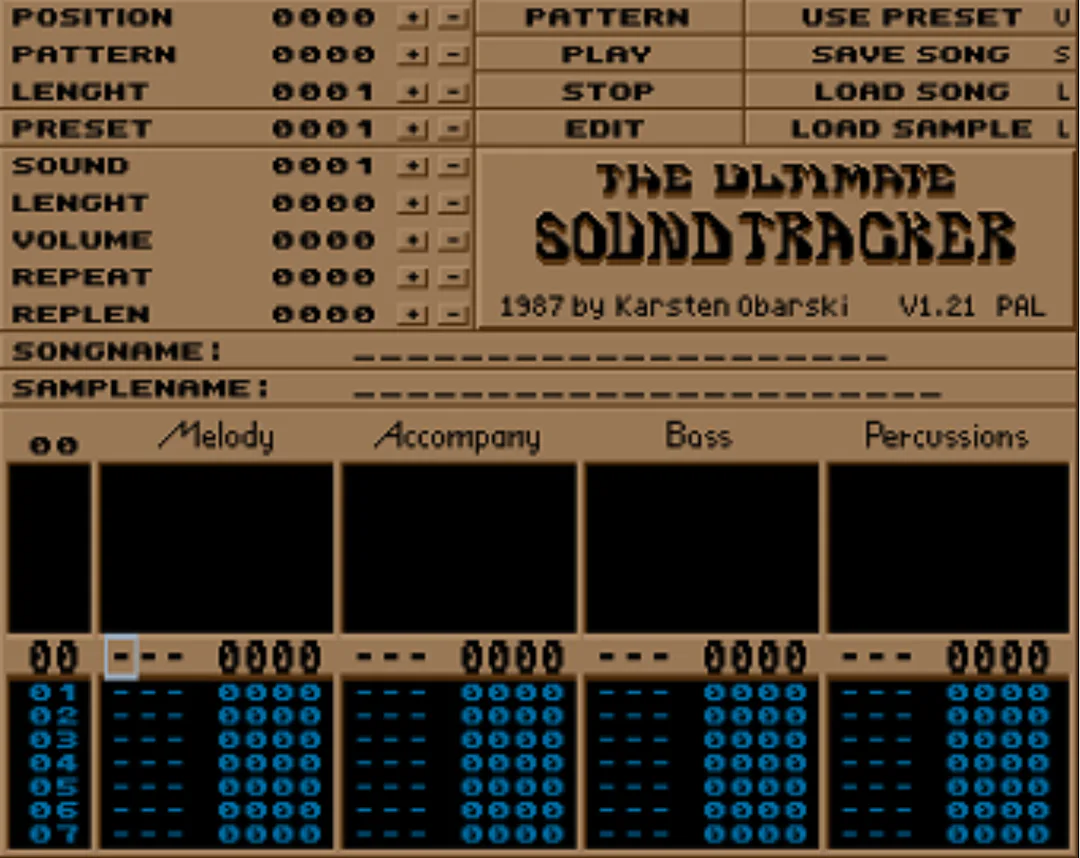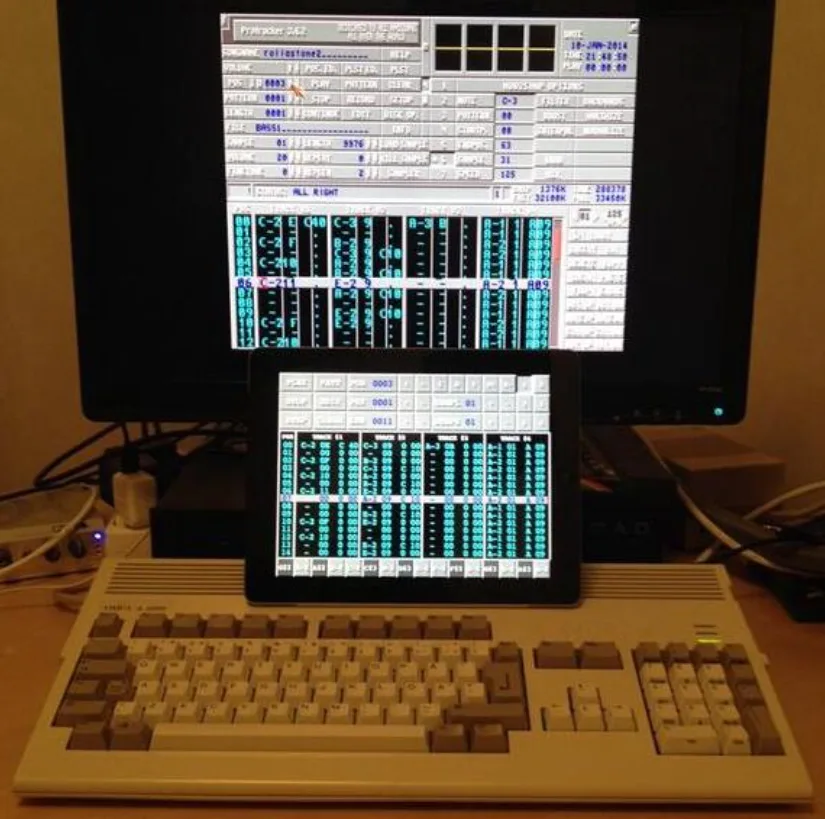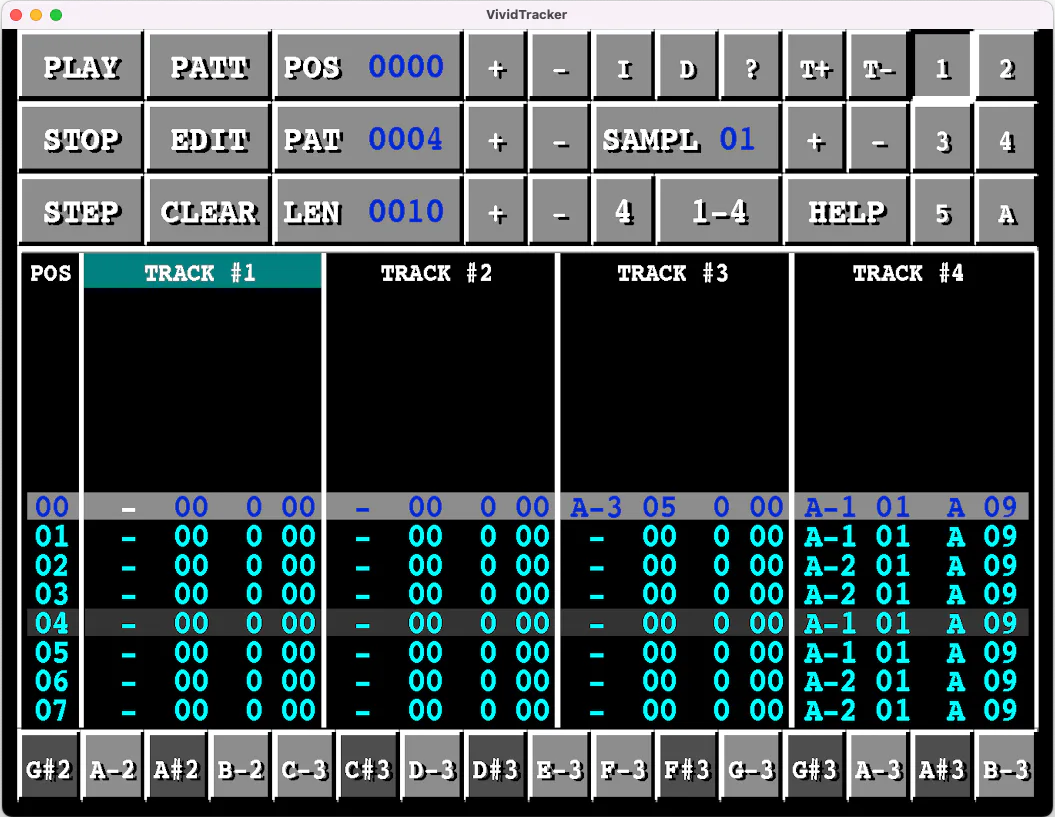Table of Contents
Welcome/Apps/VividTracker/Tracker history
Tracker history
In the beginning
The Commodore Amiga was an amazing computer at its time. When the first Amiga was released in 1985, it was superior to anything on the market, both when it came to graphics and sound. It could display up to 4096 colours on the screen at the same time using its Hold-And-Modify (HAM) colour mode and it could play back 8-bit samples on four different channels using its amazing Paula chip. Two of the channels are sent to the left audio output and two are sent to the right audio output, thereby delivering stereo sound.
The first two commercial Amiga applications for music making appeared on the market in 1986; SONIX from Aegis and Deluxe Music from Electronic Arts. Both used a traditional note sheet, making them easy to understand but limited by the fact that the note sheet is not the ideal interface to create rapid sequences of different sampled wave forms.
In 1987, this changed by the release of The Ultimate Soundtracker, written by Karsten Obarski and distributed by the company AES. The arrangement was completely different from the traditional music applications by introducing the concept of patterns, where each pattern would hold 64 different steps and 4 different channels. Each step would store note, sample and command information such as quick arpeggio, portamento, and volume (this would later be called “effects”). Patterns could then be added together to form a song, which could be saved together with the samples as a “module” file (or mod-file for short).

Despite its innovative interface, which allowed powerful manipulation of the soundscape, it did not become a success. It was buggy and the first version was rather limited. Also, people were not used to this kind of interface. However, this was about to change as a Dutch demo programmer Exterminator from the demo group Jungle Command disassembled Soundtracker and added new features under the name Soundtracker 2 - and maybe most importantly, he released the playback routine so that anyone could add the music in their own demos or games.
Since this version was free, it became very popular and it didn’t take long before other hackers started to make their own versions and adding more features (NoiseTracker, StarTrekker, Protracker, etc). They also changed the original “module” file format so that it became partially incompatible not only with the original Soundtracker but also between the derivatives.
With time, the most popular version of them all would become Protracker and version 2.3D has become the reference that many Amiga musicians are still using to this day. It has also been ported to macOS and Windows as a very faithful version of the original 2.3D:
Since these different trackers and the mod-format became so popular, both among demo makers and game developers, there are now thousands of mod-files that can be downloaded from sites like https://modarchive.org. Many are compatible with Protracker v2.3D.
Other trackers have also been developed for PC to support even more channels and 16-bit samples; the most famous being FastTracker 2 with up to 32 channels. However, although it can read mod-files created on Protracker, it is using its very own XM-format to store this extended format. It is the ambition of VividTracker to support XM-files in an upcoming version.
VividTracker was born
I started developing apps for iOS in 2008. My first app was a game called Roll a Stone. This game had a simple mod-player to allow adding game music in the app and I made all the music on my Amiga 1200 using Protracker. However, it didn’t sell well.
In 2023, there were quite many music making apps on the App Store but still no Protracker compatible app that could load and save mod-files. I was hoping that someone would release a Protracker clone, but since this didn’t happen I came to the conclusion that I needed to develop it myself. I took the mod player I had for the Roll a Stone game and made a user interface to allow editing the module. It would take about a year, but in January 2014 I happily announced the release of VividTracker, the very first and still only truly Amiga Protracker compatible iOS app.

Recently, Apple has made it possible to install and run iPad apps on their new M1/M2 processor computers and VividTracker has therefore been adapted to work on these new computers. Unfortunately, VividTracker depends on third party libraries that do not support Intel based Macs, so a separate Intel version will probably not be developed.

